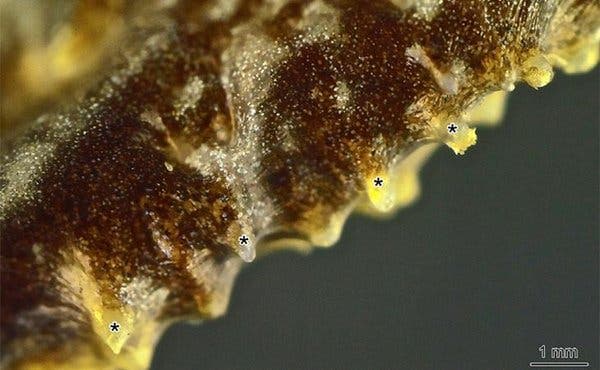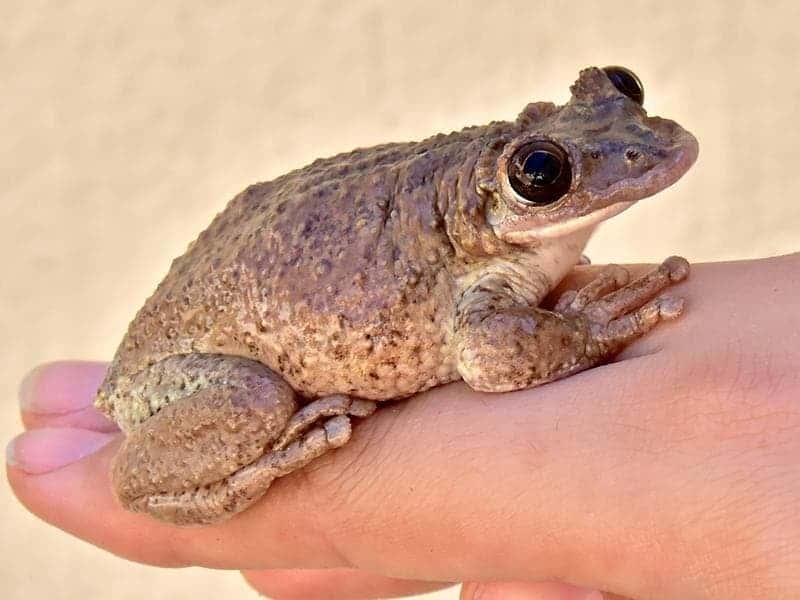The first venomous (yes, venomous – not poisonous) frog was discovered in Brazil by mistake. A frog head-butted Carlos Jared in the hand, and after a while he started feeling a strange pain; it took him a while to connect the dots and realize that the frog was responsible for the pain he was feeling and decided to find out what he was dealing with.

‘Venomous’ and ‘poisonous’ are sometimes used interchangeably, but they are different terms. Some frogs are poisonous when eaten and even when touched, but they don’t have a delivery mechanism – in other words, they’re not really venomous. Also, frogs have no fangs (like snakes do), so delivering venom would be quite difficult for them. However, two species of frog in Brazil have been found to be capable of injecting poison using horns on their head. They charge on their opponent and headbutt them, injecting the venom through the horns. This was not only surprising, but raised significant questions about animal toxicology. The study that describes the species writes:
“These frogs have well-developed delivery mechanisms, utilising bony spines on the skull that pierce the skin in areas with concentrations of glands,” the study said. “Because even tiny amounts of these secretions introduced into a wound caused by the head spines could be dangerous, these frogs are capable of using their skin toxins as venoms against their would-be predators.”
Edmund Brodie of Utah State University in the United States explains:
“Discovering a truly venomous frog is nothing any of us expected and finding frogs with skin secretions more venomous than those of the deadly pit vipers … was astounding,” Dr Brodie said.
Jared, now at the Butantan Institute in São Paulo, had to investigate the frogs under a microscope to realize how this mechanism works. Basically, bone spikes erupt near the venom glands, and as the frog’s lips curl back, the glands dribble the venom onto the spikes sticking out of the skull. Then, it’s simply a matter of poking the spikes against the foe.

“This is very, very cool. Unprecedented would actually be an understatement,” says Bryan Fry, a molecular biologist at the University of Queensland who was not affiliated with the study. But if we already knew frogs could be poisonous, why is this discovery such a big deal? The answer lies in the often-misunderstood difference between poison and venom.
The venomous traits of the two species, Corythomantis greeningi and Aparasphenodon brunoi actually have a very strong venom; pound per pound, it’s almost twice as dangerous to mammals as typical venom of the fearedBothrops pit vipers, scientists explain. Tests have shown that one gram is capable of killing more than 300 000 mice or about 80 people. However, they produce it in much smaller quantities.
“It is unlikely that a frog of this species produces this much toxin and only very small amounts would be transferred by the spines into a wound. Regardless, we have been unwilling to test this by allowing a frog to jab us with its spines,” Dr Brodie said.
Finding this species shows just how much we still have to learn about animal toxins and venom. Venoms have popped up some 30 times in the tree of life, usually from usual enzymes. For example, spider venom originated from a harmless hormone—the spider version of insulin. Over time, evolution favors individual with more potent venoms. But in the case of the frogs, this came as a complete surprise.
“Even the most recent book on Brazilian frogs lists them as nontoxic,” says study co-author Edmund Brodie.
Journal Reference.
Was this helpful?



